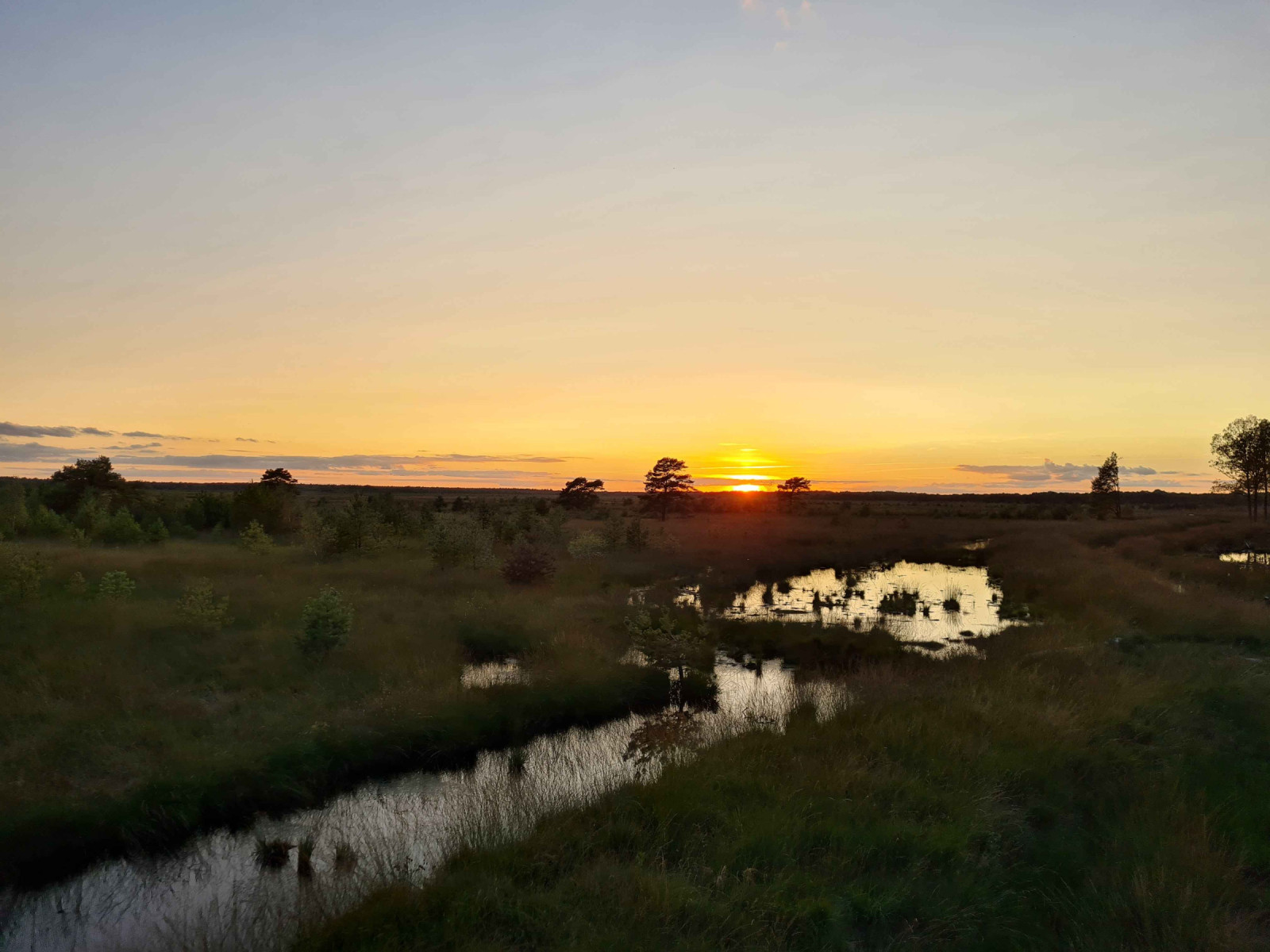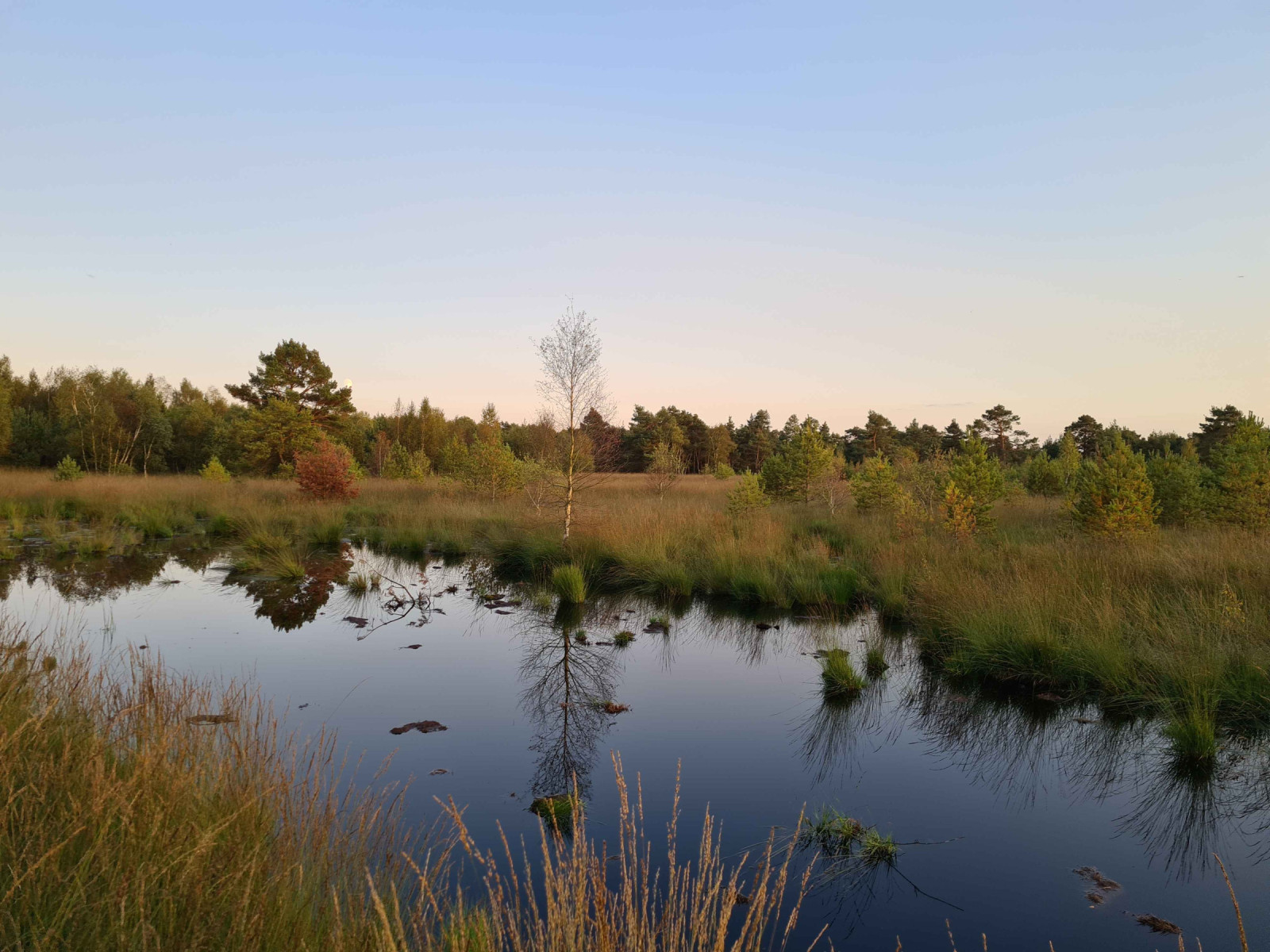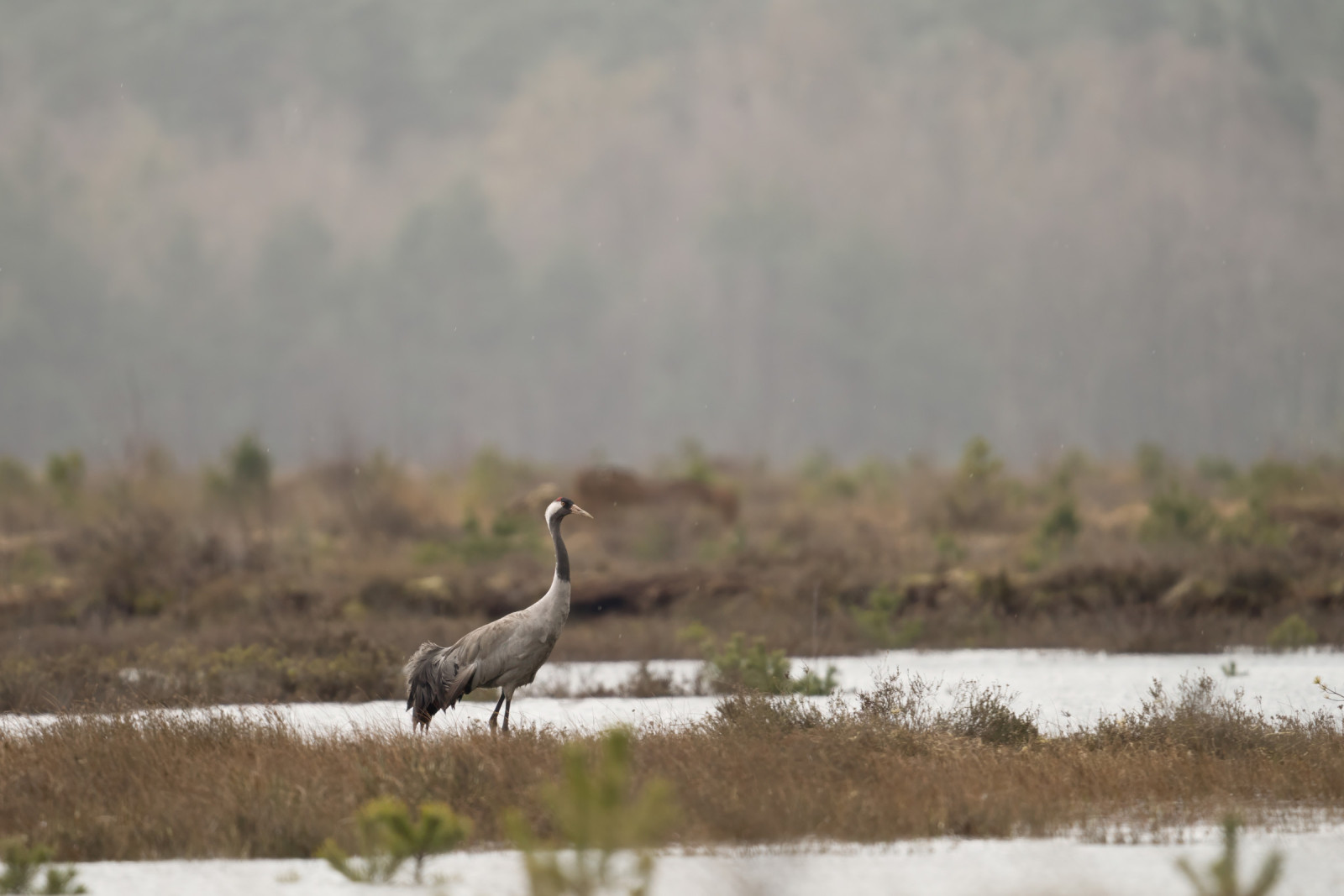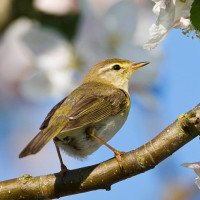Descripción
In the last few years the Bissendorfer Moor was rewetted which is very noticeable in dams through the entire place. The area of about 1.1 km² / 110ha is almost without any trees and from the two hides most of the area is more or less well visible and scannable in search for birds. The Bissendorfer Moor is inhabited by some rare breeding birds like Chotacabras Europeo, Chocha Perdiz, Grulla Común, Buscarla Pintoja, Tarabilla Norteña, Zarapito Real and also Agachadiza común.
The forests surrounding the area contain a few interesting birds like Pico Menor, Picamaderos Negro or also Bisbita Arbóreo. These species can almost always be observed/heard pretty well from both towers in late spring and summer. In the past this place was also a breeding place for Gallo lira común and Búho Campestre.
During migration, the area is known to have great amount of Grulla Común, staying overnight, and sometimes on some smaller forming ponds waterfowl like Ánade azulón or Cerceta Común can be seen. In winter it is always worth to scan the entire area for Búho Campestre, Aguilucho pálido and Alcaudón Norteño.
Detalles
Accesso
Bissendorfer Moor is located 18 km north of Hannover, near the town of Bissendorf. The area is best accessible by using a bike, but having a car and walking the last few meters also works (about 1.7 km for the walk from the hide in the north; about a 2.5 km walk to the hide in the south). In the village Kiebitzkrug there is also a bus stop from which the shortest way to the hide in the south is about 3 km. Press P on the map for directions to a parking.





